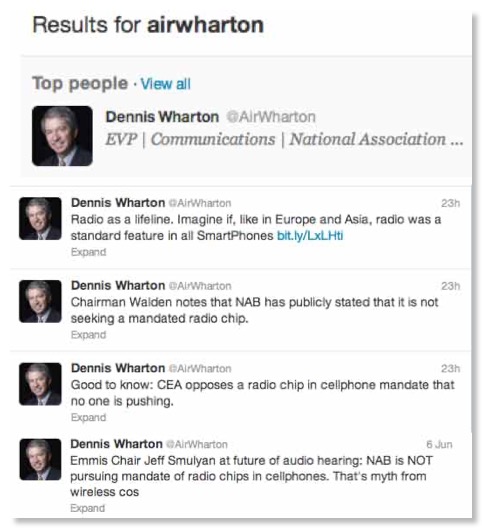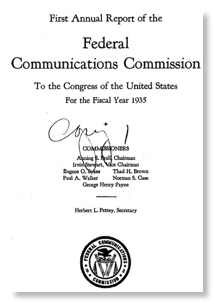What is FCC Doing to Help Displaced Long Term Field Employees

The above is a current vacancy announcement for FCC. As you can see at the bottom the posting does not authorize relocation for whoever is hired. This has been the general practice at FCC since the Fowler chairmanship in the 1980s. But FCC in the name of "field modernization" is about to layoff 44 field employees, most of them long term employees. A handful of field employees will keep their jobs but face downgrades — effectively demotions from the same change.
The field modernization is a decided issue that has been voted on by the Commission and we will no rehash it here even though we disagree. However, a separate issue is what to do now to implement it. It is reasonable to assume that some of the affected employees would qualify for this job opening in Public Safety & Homeland Security Bureau. Will they be given preference? Other agencies give preference to displaced employees. Will FCC?
If they apply and are selected will FCC pay relocation costs? (Former Managing Director Ed Minkel was remored to reject any selection for a posting who was eligible for relocation costs. Does his current successor have the same policy?)
Relocation costs of federal employees transferring to a new work station is allowed under Chapter 302 of the GSA Federal Travel Regulations. More specifically §302-1.1(b) says you are eligible for relocation costs if you are " An employee transferring in the interest of the Government from one agency or duty station to another for permanent duty, and your new duty station is at least 50 miles distant from your old duty station." Note that under §302-3.100 FCC can pay relocation costs for "employees separated as a result of reduction in force or transfer of functions who are re-employed within one year after such separation."
If "field modernization" is going to save FCC so much money, can't some of it be used to hire long term loyal employees who qualify for other positions in FCC? Should they be actively considered? Should they get a modest preference?
NAB's Campaign for FM in Cellphones: Possible Unintended Side Effects

In any case this legislation never gained any traction.
Recently, NAB-related Twitter feeds have been gloating about "voluntary" agreements with cellular carriers to "unlock" the FM demodulator in most or possibly all Android smartphones.
Momentum Grows for FM #Radio in Smartphones | @NAB_Labs http://t.co/4plT8RsFMw
— Jacobs Media (@jacobsmedia) August 25, 2015T-Mobile, AT&T and Sprint back FM chips in cellphones. We (& FEMA's Craig Fugate) welcome Verizon to join the party http://t.co/5ooCmpSS37
— Dennis Wharton (@AirWharton) August 19, 2015In view of the bizarre deal NAB allegedly tried to cut with the record industry on this issue, one wonders what NAB might have offered these cellular carriers? Support for their opposition to net neutrality? Support for their implementation of LTE-U in Wi-Fi bands? (Note that NCTA is strongly against this so supporting it could get back at 2 NAB enemies at the same time!)
Just as this issue is getting resolved bilaterally between the broadcasters and the cellular carriers, there was a piece today on NAB member NBCUniversal's Today Show about the danger from "ear buds" typically used with smartphones. Here is a quote:
"Probably the largest cause [of hearing damage] is millennials using iPods and [smartphones]," says Dr. Sreekant Cherukuri, an ear, nose, and throat specialist from Munster, Indiana. Hearing loss among today's teens is about 30 percent higher than in the 1980s and 1990s, Cherukuri estimates….Cherukuri tells young patients to stop wearing headphones — especially earbuds, which place the sound closer to the ear drum, enhancing volume by as much as 9 decibels. "
Yes, ear buds came with cellphones to be used for voice calls. But the number of minutes of voice calls per phone is not increasing as most millennial prefer texting or e-mail. (Some that is also helpful in the RF safety area.) But encouraging millennials to use their ubiquitous smart phones for long term FM music listening just as the Sony Walkman disappears could raise the very issues that Dr. Cherukuri raises above as an unintended consequence. There are smartphone apps that limit acoustic power to prevent this danger, but we don't see much from either NAB or the cellular industry on why this is important for millennials.
Yes. the Walkman had a similar problem, but they were generally used with headphones not today's ear buds. The website, TeensHealth is the source of the green infographic at the right. It clearly says "Noise-induced hearing loss due to earbuds is 100% preventable if you use them in moderation." If the broadcast industry is so intent on changing the life style of millennials, we hope that pay attention to this key health issue also.
FCC Media Bureau's Low Key Web Archive of Historic FCC Reports
The old FCC annual reports at the site are in .PDF format while the FRC reports use .JPG or .GIF images. This archive is not a key priority so little effort is spend on maintaining it.
There is another archive here that deals mostly with broadcasting issues but also includes historic tidbits like "FCC Order No. 1" describing the organization of FCC in 1934 and the original text of the Communications Act. This second archive is poorly indexed, but fascinating for academics and other researchers.
The archive is missing copies of FCC annual reports from 1966 - 1994.
While paper copies exist somewhere in FCC and they could conceptually be scanned into .pdf format, the current and pending low resource level at FCC make this a very low priority. However, contacts in the Commission indicate that they would be glad to add .pdf's of the missing annual reports to the archive for access by all if someone can provide them. Even a few would be nice.
So are there readers out there who can provide some of these missing FCC annual reports in .pdf or some other convenient format? Feel free to contact your blogger here.





![Validate my RSS feed [Valid RSS]](valid-rss-rogers.png)

